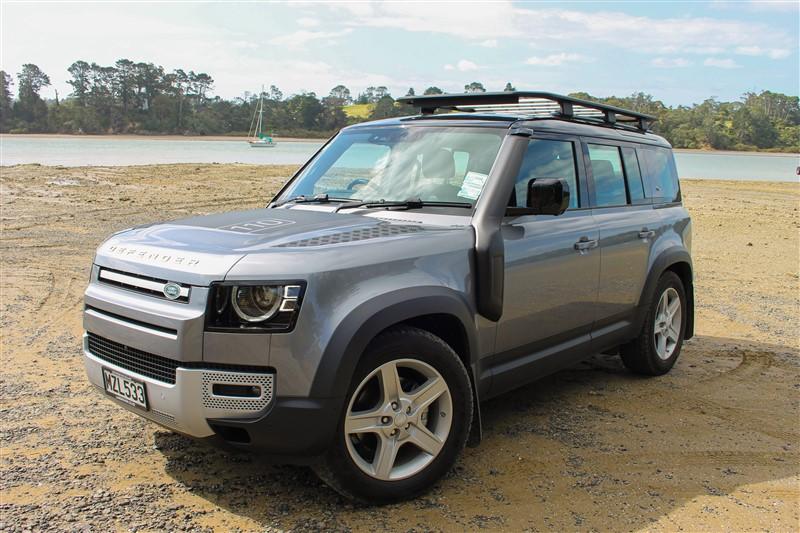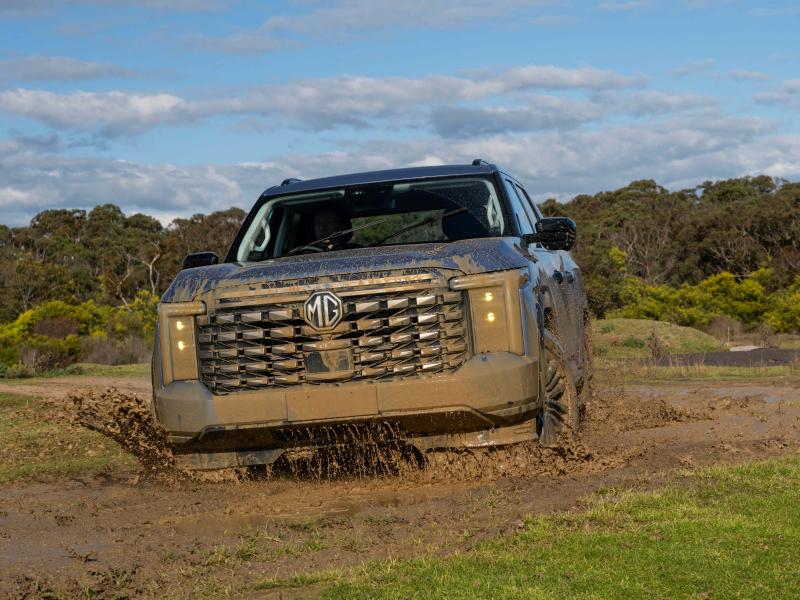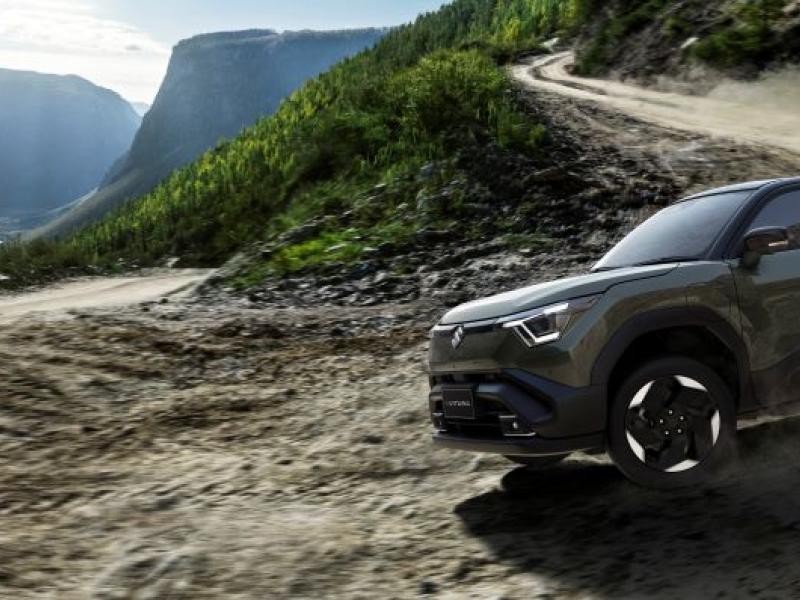A closer look at the 4WD of the Year
The celebrations are over, the accolades are flowing. Sean Willmot now takes a closer look at the heir to the throne – Land Rover’s Defender 110.
At the risk of inciting the ire of enthusiasts, I believe it was as recently as 1990 that the Land Rover Series I, II and III naming protocol was absorbed into the evocative Defender name.
The Defender 90, 110 and 130 models carried the Land Rover legend through into and beyond the turn of the century with two significant engine upgrades and a raft of minor changes addressing comfort, safety and ergonomics. Along the way the Defender adopted its own version of the Discovery/Range Rover suspension, farewelling the all-leaf suspension that had served so well through the second half of last century.
Two decades into the 21st century we welcomed the next monumental chapter in the vehicle’s history.
Pause for a moment and reflect on that time Angelina Jolie stepped in and out of a specially-designed Defender as Lara Croft, Tomb Raider. Angelina/Lara does it Defender with considerable appeal.
I too got to step into the Land Rover Defender, though not to the same critical approval from the general populace.
I had been working as a motor noter for a few years by this time and had yet to sample anything from the Land Rover line. Even so, I would not have called myself inexperienced in the world of cars/SUVs etcetera.
I was a little taken aback when Land Rover’s media wrangler gave me a briefing which would have been a credit to an SAS Staff Sergeant, explaining with an excitement level measurable on the Richter Scale, the dramatic updates which had occurred in the model I was to drive.
These included: an upgrade to the audio system, an increase in the thickness of the steering wheel and a refinement to the hand operated windscreen louvres which formed a major element of the Defender’s air conditioning system.
I thought the Land Rover man was being funny. He wasn’t, and that was – oddly – the last Land Rover product I reviewed. Until now.
Turns out there have been changes at Land Rover New Zealand since then and none of the old guard remain, outside of the occasional cryogenically frozen technician with a ‘Break glass in case of difficult 4WD question from the media’ warning attached.
And this is probably just as well, because the old guard would likely have flipped their Beefeaters at the sight of the 2021 model Defender.
I’m going to stop with the mildly sarcastic jibes now, because the current Defender is so good and has won that many awards, including our own, it’s time to see why.
One of the reasons doesn’t sound like much, at least not from a motoring perspective, but even a Land Rover luddite like me can appreciate the dilemma facing the design team at Solihull when presented with the prospect of producing a 2021 and beyond model.
Nowadays the quintessential British off-roaders – the Defender and Discovery – are built in Slovakia, but they maintain a tenuous connection with Old Blighty through the design teams based there.
And the design dilemma? How to build a contemporary Defender, without losing its iconic appearance and attributes.
Well, they have – in my humble opinion – done an outstanding job, and judging from the awards from all over the world, I’m hardly the lone voice in the wilderness, which the Defender could rightly call home.
The 2021 Defender is a vehicle which can’t annoy the loyalists because it still looks Defender-ish and it brings a smile to the dial of newcomers to the fold, because it’s so good to drive.
OK, the front-end treatment sort of resembles a Thomas the Tank Engine cast member with those hooded LED headlights and slightly “I’m English and grumpy about the weather’’ lower grille, but the overall look does grow on you.
With Land Rover’s 70-year heritage, there is no reason to suspect the 4WD ability of the Defender could ever be questioned, though to the Land Rover Faithful, the ‘front office’ may seem somewhat bewildering.
Some of the buttons and controls are quite straight forward and self-explanatory, clever really, considering these are controls and buttons most will use during everyday driving experiences.
When you want to take the Defender into its more ‘natural’ hunting preserve however, engaging the mechanisms which have earned Land Rover product its indomitable off-road reputation is no longer the simple matter of locking wheel hubs and shifting the secondary lever of the transfer box.
You could at this point, read the handbook (yes, I know, ‘real blokes’ and all that – but it doesn’t demonstrate weakness to do so) or you could take your chances and randomly press the faux buttons on the central touchscreen, hoping that you find the right combination of terrain selection, height adjustment, engine and transmission performance as it pertains to the terrain selection, traction control differentials and more electronic trickery besides.
And trust me, after trying the random button option, that handbook study looked better and better.
So yes, the defenders of the faith when it comes to Defenders might have to do a little homework to discover how and why everything works and how to get to it.
A lot of the electronics are actually very easy to identify and use, but those with traditional off-road experience probably will have an easier time of it than first timers trying to go off road by the seat of their pants.
So having set the options the way you want them, you can put the monocoque Defender through its paces. Wait. Say whaaat? Monocoque? The body-on-ladder-frame design is the strongest for off road work, isn’t it? The Defender surely has a ladder chassis?
Well, yes and no, but according to Land Rover’s design teams, Defender’s monocoque body – in addition to being lighter and more fuel friendly – has three times the torsional rigidity of a body-on-frame construction.
It is also safer. Monocoque design allows collision impact energy to be dispersed with at as throughout the entire vehicle structure rather than just in the ladder chassis.
Of course, the Defender will spend more than 50 per cent of its life on suburban streets, highways and low-ways and generally on tarmac, chip seal and occasionally, concrete.
Here is where a monocoque design trumps a ladder chassis. In part this is due to the unibody’s lower centre of gravity and a manufacturer’s ability to use aerodynamic designs in the bodywork.
OK, that last maybe not so much with a boxy design like the Defender’s, but a monocoque design allows greater agility to be built into the vehicle.
You may think from all of the above, that the Defender of 2021 is more inclined to on-road adventuring, but it still has the chops to tackle Karangahape Road just as capably as it does Kalahari Desert and it’s a credit to the design teams that it can.
I’m firmly of the opinion that the promotional Defender of today may well have done more off-roading in more countries around the world than any other Land Rover in history.
At the peak of its launch time, there was reg a release every month of the Defender scaling dizzying heights in South America, to trails used only by goats high on something in Thailand, across the Sahara or whatever desert happened to be as far from the beaten track as Land Rover’s budget could allow.
Heck, they even let our own Ashley Lucas loose in one, so they must have covered pretty much every continent!
LR reckons the monocoque design makes for a more engaging drive experience and in this, they are not wrong.
You can put massive miles on a Land Rover Defender – crawling over the Sahara, Outer Mongolia, the foothills of Nepal and Auckland’s southern motorway (comparable in quality and peril), but you won’t get tired.
If anything, you’ll be inspired to go and find somewhere else to play after you have reached the end of your journey. Here is a vehicle where the ‘trip to’ is the best part of your destination.
One of the previous model’s issues was its tendency to poke you painfully in the most uncomfortable and often unexplainable places. Not anymore. I’d go so far as to call the new Defender positively luxurious.
And everything was so easy to find. There’s no more cramped interior here.
You have acres of shoulder space, seating for a comfortably generous five folk and then in a 110, you’ll find you have 7 seats – and the last two aren’t naughty seats either. They provide the same degree of comfort as the second row.
There are seven Defenders to choose from. Three of those are Defender 90s and the remaining four the 110 models. Both have S, SE and X trims, but there is also an entry level 110, allowing for an under-$90k entry model.
But wait, there’s more. The Defender’s journey has not ended here. Coming up this year are further V8 versions and the XXL Defender 130. We are already aware of a number of models arriving next year.
The new Defender: more history in the making.







